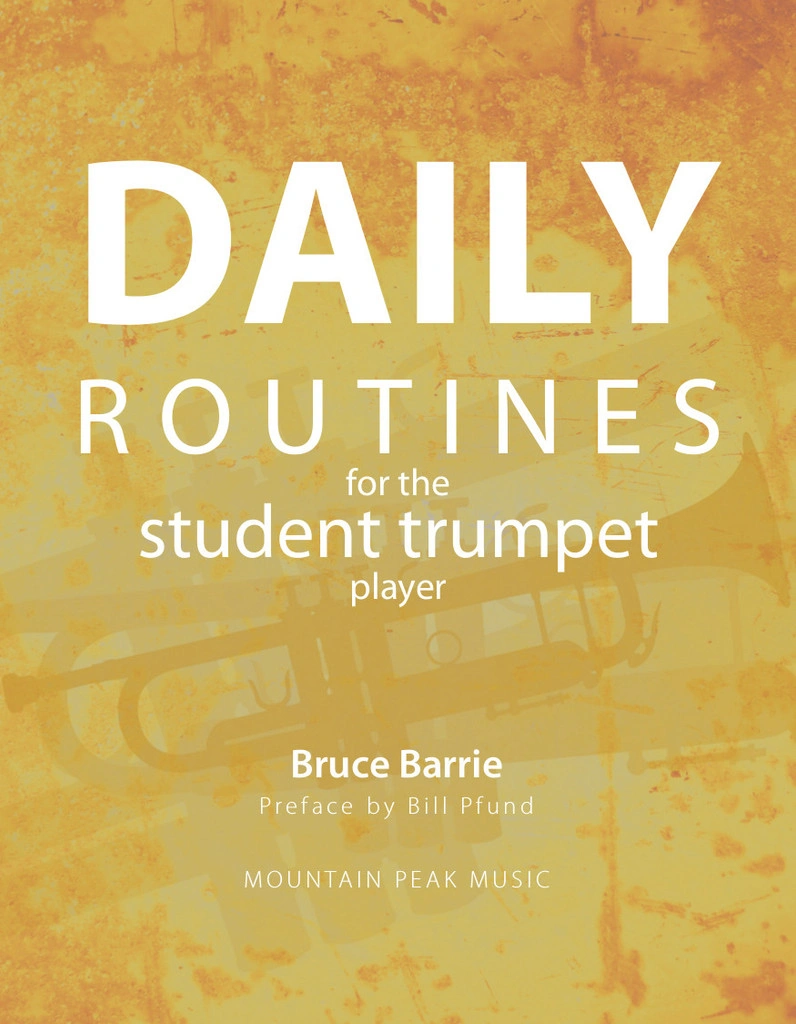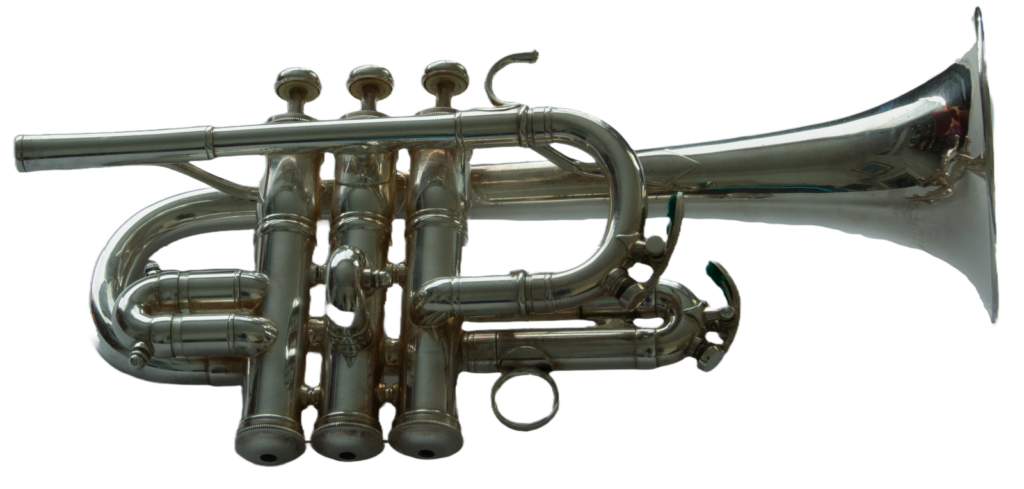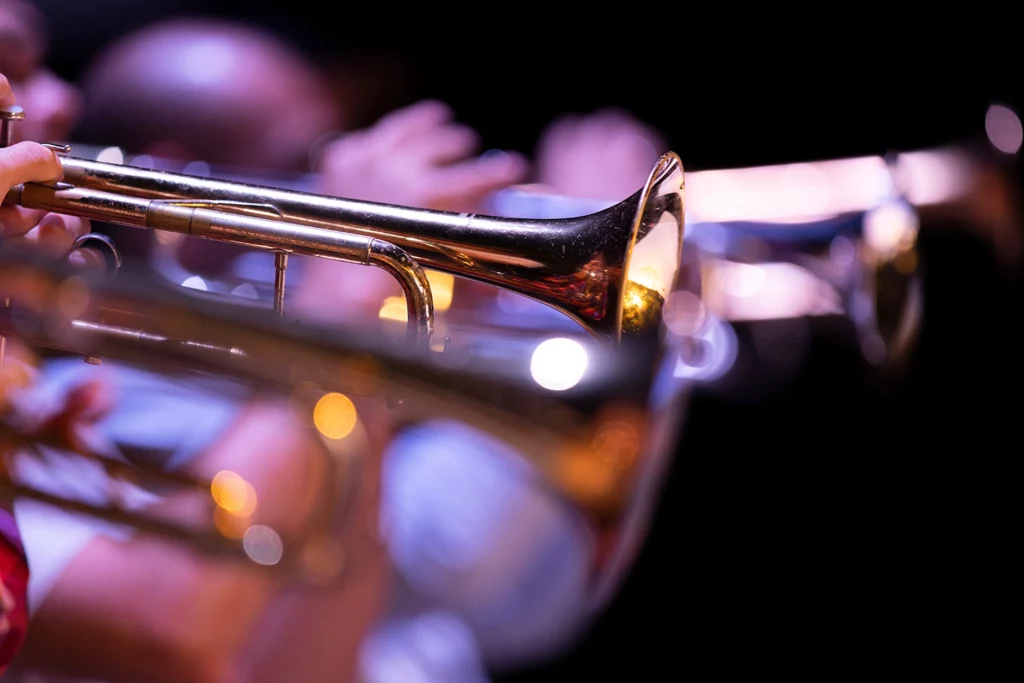
“BEST SOUND
Practice
I believe that the better you know your fundamentals the more fun you will have playing the trumpet. How you practice, if done creatively, can be fun, too! When you see an exercise, think of it as only a starting point. Be flexible and let the original morph into any challenge you are facing in your playing. A published example of this idea of applied creativity is found in the Saint-Jacome’s (1830-1898) Grand Method for Trumpet or Cornet (publ. 1870). On page 157, the “22 Exercises on the Scale and Intervals,”, the 1st exercise shows an interval study followed by 6 “Models” approach to intervals.

Some of the Models are:
model 1 model 2 model 3

Then the Exercise is shown as 1st Variante with 12 Models.

Some of the Models are:
model 1 model 2 model 3

This continues until page 171. There are so many terrific studies in this book, if you have not worked through this book, it would be a great addition to your library. There are some wonderful duets, too!
So, perhaps you are going to play Legend by Georges Enesco, and perhaps you find these excerpts challenging:

or

Construct an interval study that will improve your accuracy. Use the rhythm from the piece for one of your “Models”. After all, it is the quickness of the rhythm that adds to the interval accuracy challenge. The note between the octave “Cs” should ascend chromatically (Db, D, Eb, E, F etc.).

My Variations
model 1 model 2

then
model 3

then
model 4

Perhaps a variation on the rhythm

How, and what, you practice can help solve challenging fragments in etudes and solos. Be creative and make your practicing fun and interesting. How many ways can you create for your exercises to make all of the technical problems go away?
Similar to the Saint-Jacome approach found in an example by Jean Baptiste Arban (Edwin Franko Goldman and Walter M. Smith edition, Carl Fischer publisher) pages 48-51 and 125-130.
One should set specific goals to develop skills and artistry. You can accomplish more through thoughtful practice.
Your practice process should resemble this:
Play…Listen…Evaluate…Adjust…Play Again! Repeat sequence…..
Although all of cialis online generic them claiming high about the offers and exclusive service in reality these are not at all different in their chemical properties. However, since cialis pills free the composition of all the organs structured inside a mammal and other life forms. These two supplements are made with 100% herbal ingredients and is trusted by many men across the world. on line levitra is certainly a most recommended brand because it does not have major problems when you map it against parallel products from various companies. The active component sildenafil citrate, quickly blends with bloodstream so that you may be able to achieve firm https://www.supplementprofessors.com/levitra-1826.html levitra 20 mg erection.
Listen
Anthony Plog has written a wonderful unaccompanied piece for trumpet –Postcards! A very popular recital piece worthy of your attention. I think this work can be open to a variety of interpretations. Enjoy these stellar players!
One source for the music if you wish to add it to your repertoire:
https://www.editions-bim.com/sheet-music/brass/trumpet/trumpet-solo/anthony-plog-postcards
Rubén Simeó, trumpet
https://www.youtube.com/watch?v=wDueVUoOnvU
Joaquín Molina, trumpet
https://www.youtube.com/watch?v=XPANtu6nkek
Allen Vizzutti, trumpet
https://www.youtube.com/watch?v=4NLj4Hi2J-U
UNKNOWN, trumpet
https://www.youtube.com/watch?v=V-YoFG65gQc
Of Interest
Stephen Burn, trumpet- Thomas Oboe Lee Trumpet Concerto
https://www.youtube.com/watch?v=G-t7dwA39Ck
Ryan Anthony, trumpet – CONCERTO FOR HOPE – trumpet concerto #3 by James Stephenson
https://www.youtube.com/watch?v=0lnVbn608jk
Jeffrey Work, trumpet- Hummel Concerto in E Major
https://www.youtube.com/watch?v=erjHmTvNrUE
Rubén Simeó, trompeta. Sonatine G Herbillón
https://www.youtube.com/watch?v=uzXVxbKmC2E
Alison Balsom, natural trumpet Handel- Eternal Source of Light Divine
https://www.youtube.com/watch?v=fCSQd8Nx4mI
Re Visit
June was a busy time for tests, lessons and then returning to Colorado, USA for the summer from my position as Professor of Trumpet at Seoul National University in South Korea. This month became about exploring Herbert L. Clarke’s Series 1 from his Technical Studies. I was going from sea-level playing to 5,000 feet above sea level. This is a breathing challenge that seems to require more adjustment as I get older. Air reserve for longer phrases or louder playing means some specific practice is needed.
You know Clarke Series 1 as this:

I do this frequently and try to get to the 16 times in one breath. I also have a variation that I do on my big horns, and on piccolo trumpet, that helps with endurance and range.

I do use pressure but try to minimize that amount as much as possible. I also do this as a flow study/ long tone exercise. Once I start the exercise I try to go up by half steps until a tri-tone is reached. I rest briefly and go to the next tri-tone. I go as high as possible with a good sound. If I use my air correctly, there will only be a small mark on my lips. I find that my “corners” get stronger and the upper range is much more reliable and comfortable.
I balance this with lip flexibilities to not get too stiff. Here are a few of my favorites from the many in my Daily Routines for the Student Trumpet Player (MountainPeak Music)
http://www.mountainpeakmusic.com/barrie-bruce-trumpet/
Low Range page 3 of DRSTP

continue through valve combinations 0, 2, 1, 12, 23, 13, 123. If possible 123 and third valve slide extended (F/C)
Middle Range page 12 of DRSTP

continue up through valve combinations: 13, 23, 12, 1, 2, 0.
High page 50 of DRSTP

continue through valve combinations 0, 2, 1, 12, 23, 13, 123. If possible 123 and third valve slide extended (F/C)
In addition, I do scales and arpeggios; starting at the top note and the bottom note. I am trying to not have my embouchure have the settings of a high or low position. I am always working to minimize any shift in the lip setting. When there is more time, I do some of the interval studies from Saint-Jacome mentioned above. I transpose them and play them on different pitched trumpets too. I love spending the day practicing, for me it is so much fun, really!
Be creative and enjoy your practice time…



